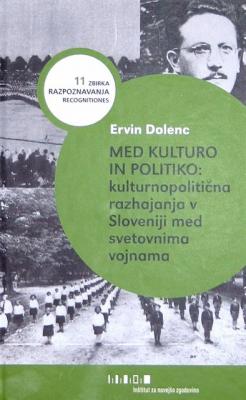Med kulturo in politiko: kulturnopolitična razhajanja v Sloveniji med svetovnima vojnama
Keywords:
ideology, historySynopsis
In 1918 the state border, running along the Karavanke mountain range, put the majority of Slovenians into a completely different world. As the developments of the so-called State of SHS since the end of October until December 1918 showed, it is definitely not true that at the time Slovenians were not mature enough to establish an independent state. As Jurij Perovšek establishes, they were not even unprepared. However, in the context of the Contemporary European politicai circumstances they were simply too small and too weak for such a goal. Before World War I Slovenians had otherwise been a completely developed nation for that period and had most of the national-cultural institutions, newspapers and well-developed literary language, needed for independent national life. Supposedly they only lacked the so-called second half, that is, the economic or entrepreneurial bourgeoisie. Similar shortcomings may also be seen in culture. Despite the relatively satisfactory general education, most clearly demonstrated by what was approximately a 90 % literacy rate, the complete development of the intellectual structure was impeded by the lack of suitable cultural institutions that could keep the Slovenian intellectuals at home. Namely, only the change of the state context in 1918 brought about the Slovenisation and essential improvement of the educational system, and consequently also the establishment of the first Slovenian university, which had been politically impeded for 70 years. Before that the majority of Slovenians had been educated in the German language since the age of ten, which hindered the educational possibilities considerably, at the same time encouraging the separation of the intellectuals from the Slovenian national community. The establishment of the University, National Theatres in Ljubljana and Maribor, national and city museums, National Study Library and Music Conservatory in Ljubljana allowed for a far greater concentration of intellectuals in Slovenia than before 1918. The Ljubljana University represents the trae beginning of Slovenian science. As Slovenian became the officiai language in all institutions and as at the University the Slovenian expert terminology was developed rapidly, we can cali it a cultivated European language, more or less equal to the neighbouring ones. Simultaneously with this process only as late as in the Yugoslav state the shaping of the Slovenian entrepreneurial bourgeoisie was essentially complete. Admittedly, the Slovenian entrepreneurial bourgeoisie did not achieve such an accumulation of capital as to indirectly enable the maintenance of high art on a larger scale, since it was probably still too young for that.

Published
Print ISSN
License

This work is licensed under a Creative Commons Attribution-NonCommercial-NoDerivatives 4.0 International License.

